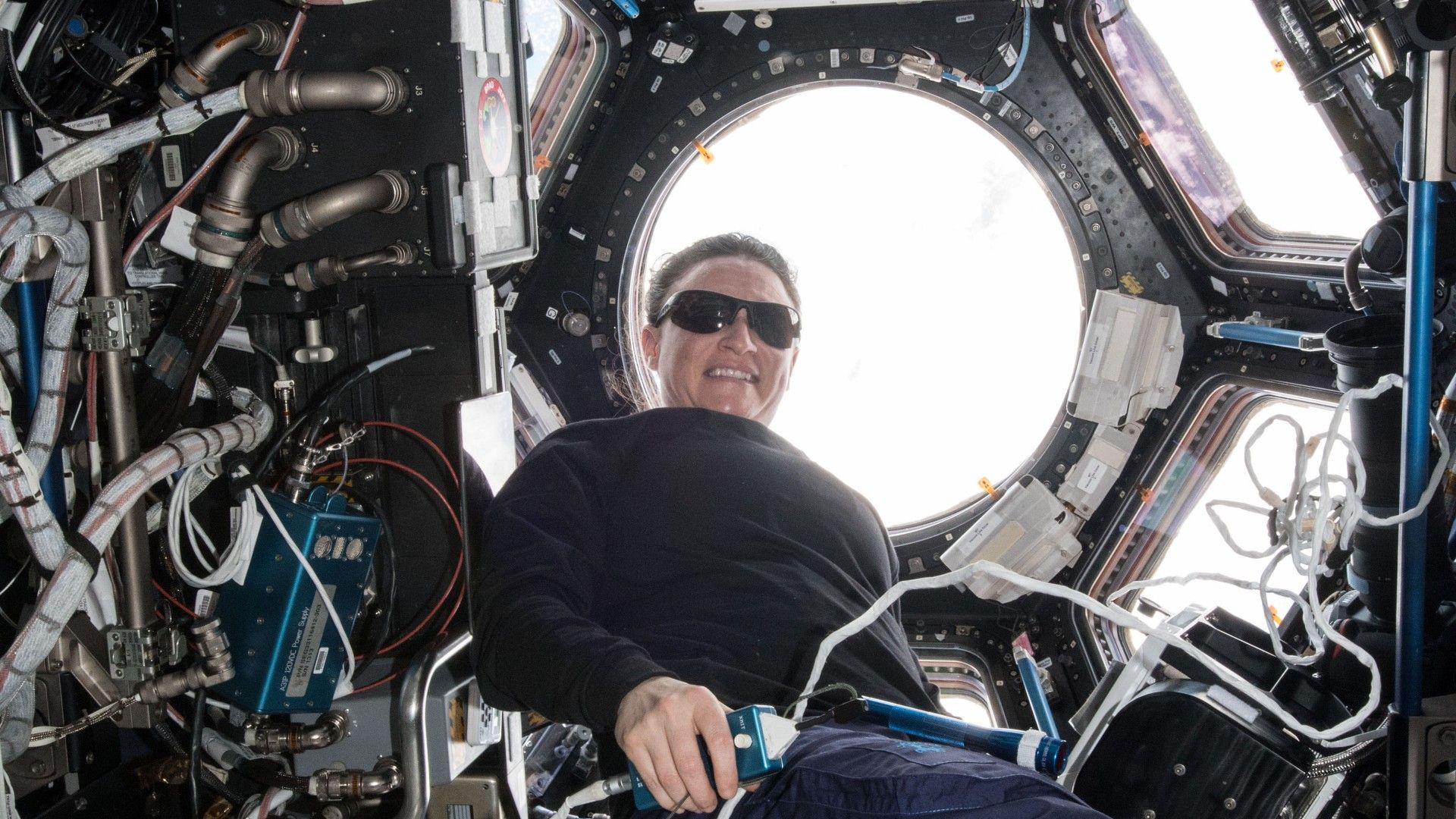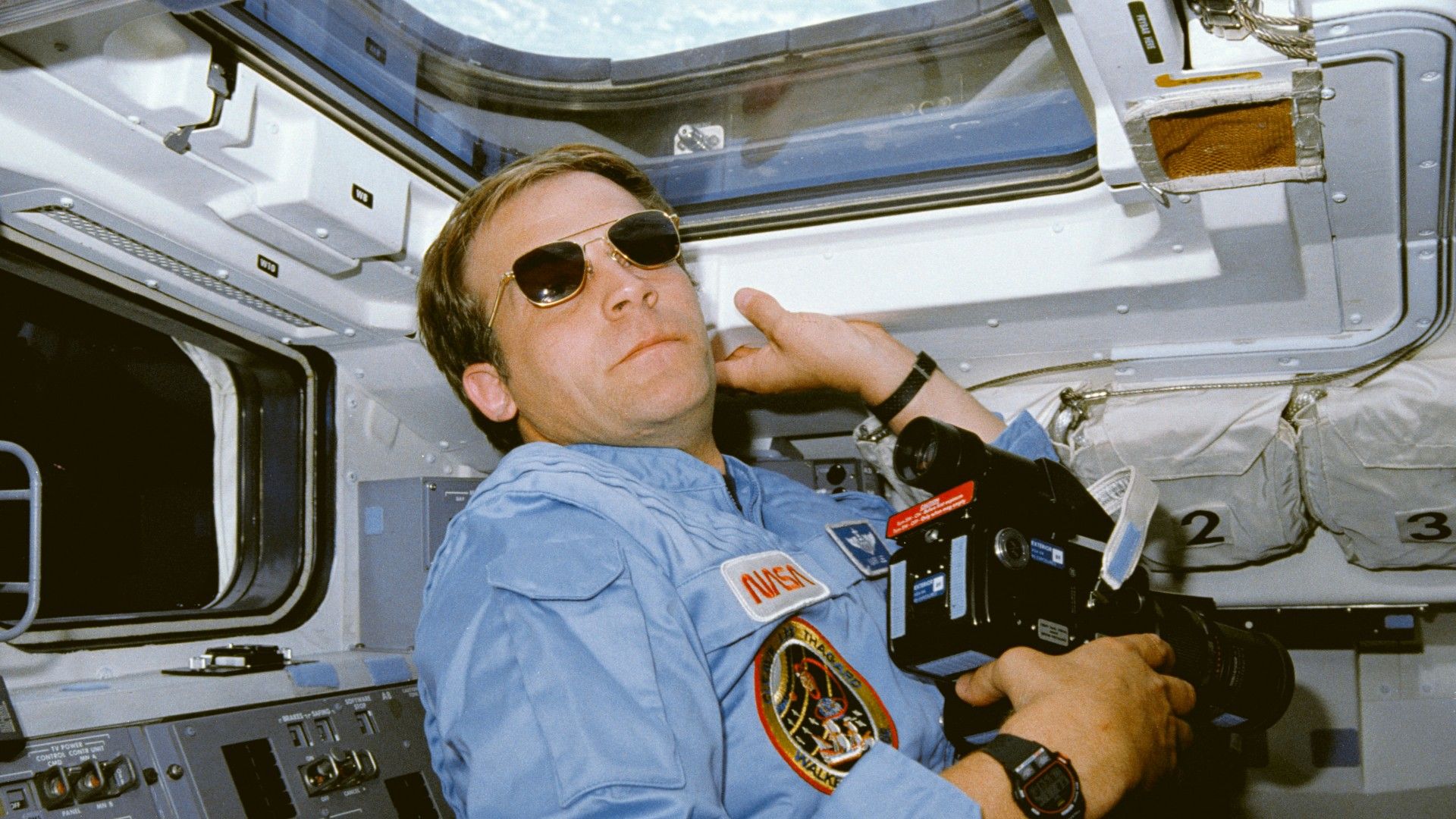
Summary
- Astronauts need sunglasses to protect their eyes from intense solar radiation in space.
- Space shades also help astronauts adapt to extreme light conditions and reduce glare.
- Astronaut sunglasses are durable and equipped with UV and IR protection.
If you’ve looked at astronaut photos and wondered why they are wearing sunglasses in some, there are some very good reasons for it. While sunglasses are not always needed, including when astronauts don a spacesuit, space shades are far from a fashion accessory.
They Need Protection From Intense Solar Radiation
As the sun is essentially a massive, natural fusion reactor, the light coming from it is a vast spectrum of electromagnetic radiation. Fortunately, the Earth’s atmosphere protects against this radiation and stops a significant portion from reaching the surface. You can thank the ozone layer, oxygen, nitrogen, water vapor, and carbon dioxide for stopping the radiation and helping life exist on Earth.
However, there is no such protection outside the Earth’s atmosphere. So when astronauts visit space, leaving the atmosphere, they need protection from the sun’s radiation. Otherwise, direct radiation exposure can damage their eyes, resulting in several acute and chronic eye conditions. So, they wear special sunglasses, also called astronaut sunglasses or space sunglasses, to prevent harmful radiation from affecting their eyes.
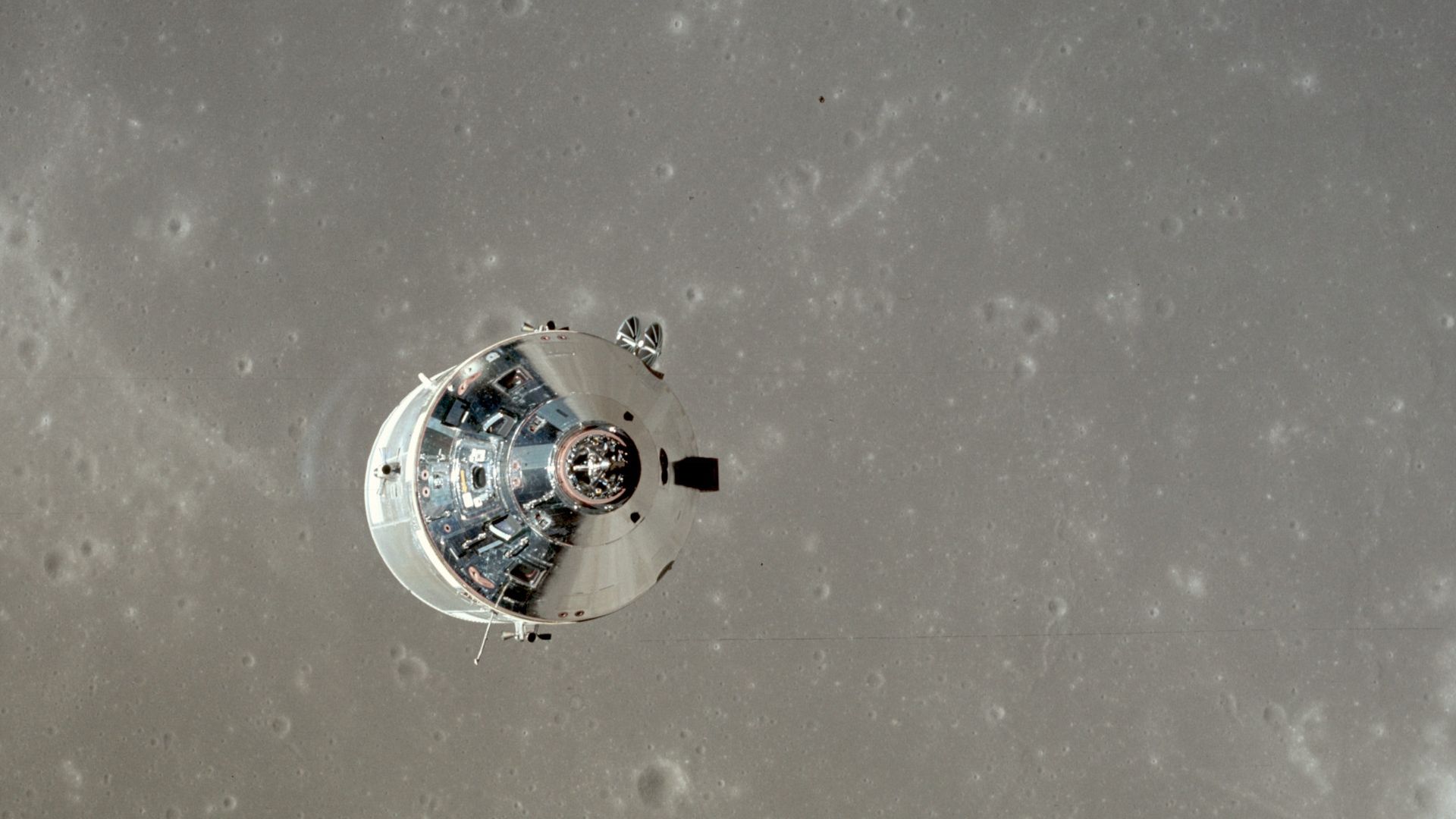
Related
How Apollo Astronauts Got to the Moon and Back
Stranded on the Moon? Not an option.
Sunglasses Help Adapt to Extreme Light Conditions
Radiation isn’t the only problem that astronauts’ eyes face in space. Unlike on Earth, they have to deal with the stark contrast between the absolute darkness of space and the sun’s blinding light.
Sunglasses help astronauts adapt to these extreme conditions, making it more comfortable for them to see and perform their tasks. Additionally, sunglasses reduce the intense glare caused by a spacecraft or International Space Station surface when it reflects sunlight. Even Earth reflects sunlight, which can cause glare.
You’ll also notice astronauts wearing sunglasses when they return from space. This is because their extended stay in space can make their eyes more sensitive to light. As a result, astronauts rely on sunglasses to readjust to the light conditions on Earth after returning.
How Are Space Sunglasses Different From Regular Models?
As mentioned, space sunglasses are designed to protect astronauts from solar radiation. As such, they are pretty different from sunglasses that regular folks like us wear, as we don’t encounter the same level of radiation, glare, or extreme lighting conditions.
Astronaut sunglasses are not your typical eyewear. They are specialized for the unique challenges of space travel. For instance, they often feature a titanium frame, known for its exceptional strength-to-weight ratio and corrosion resistance. This ensures the glasses can withstand the rigors of space. Another unique feature is the hingeless and screwless design, which prevents small parts from coming loose in zero gravity.
Polycarbonate is the material of choice for making lenses as it’s lightweight, impact-resistant, and features inherent UV protection. However, it’s coated with multiple layers to ensure 100% blockage of harmful UV radiation. There are also coatings to absorb or reflect IR radiation. Sometimes, even a thin layer of gold is used to reflect IR radiation.
Trivex is another material used in the construction of lenses in astronaut sunglasses. It can block 100% of harmful UV radiation without the need for special coatings, is lightweight, impact-resistant, and has superior optics.
In addition to UV and IR blocking coatings, multiple layers of anti-reflective material are added to both sides of the lens to reduce glare from various light sources.
So, the astronaut sunglasses are not only incredibly durable to withstand the rigors of space travel, but also have superior glare reduction, better scratch resistance, enhanced fit, better optical clarity, and UV protection.
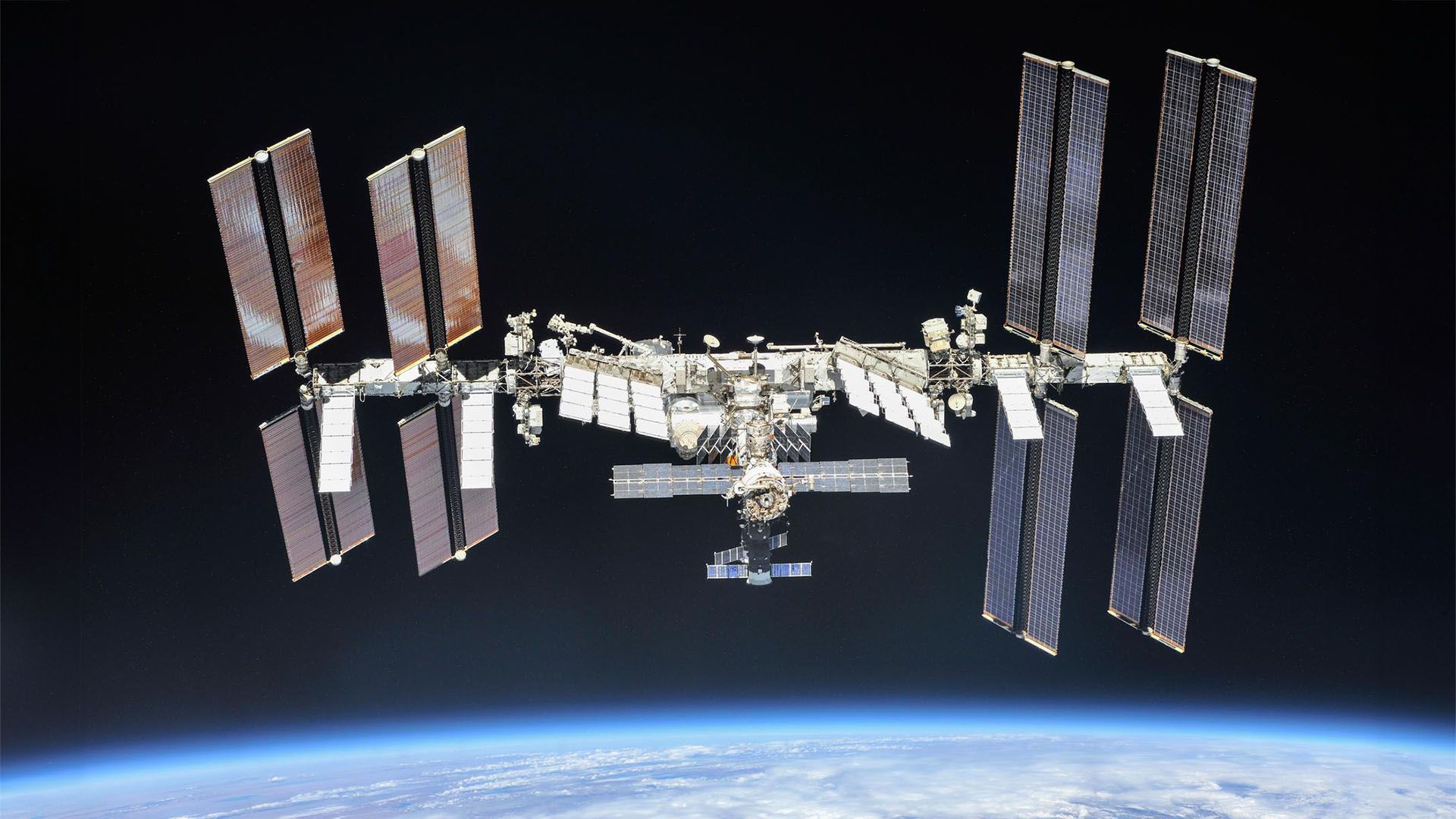
Related
8 Coolest Things Astronauts Do in the International Space Station
Astronauts get 16 sunrises a day—meanwhile, you hit snooze 5 times.
Can I Buy Astronaut Sunglasses?
While the actual astronaut sunglasses may be hard to come by, outside of probably an auction, some brands offer versions of models previously used on space missions. For example, American Optical (AO), which made sunglasses for astronauts in various Apollo, Gemini, and Mercury missions, sells a version of them to the public. These AO “Original Pilot” glasses have the same design and provide 100% UVA/UVB protection.
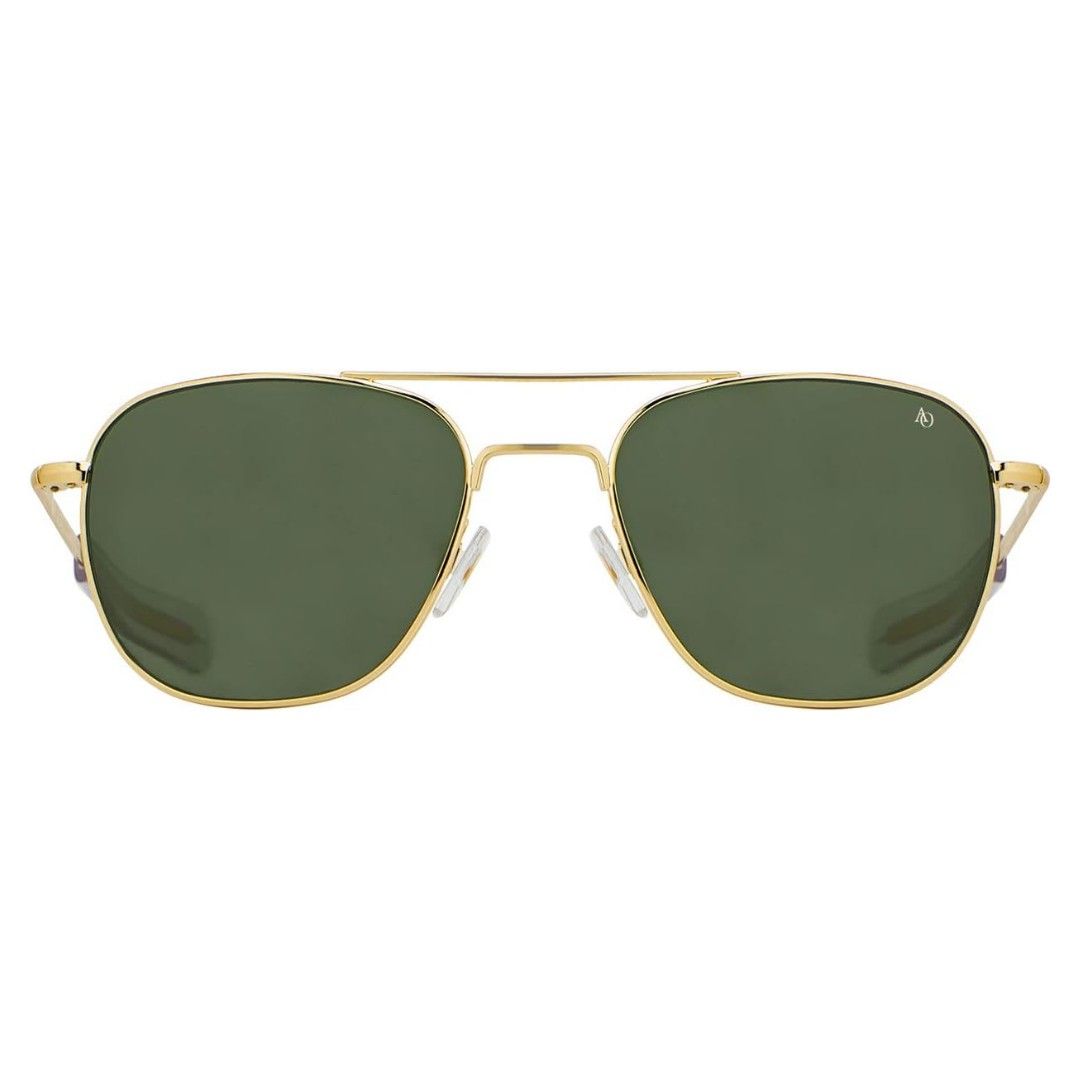
AO Original Pilot Sunglasses
The American Optical Original Pilot was the first pair of sunglasses on the moon. It offers 100% UV protection and is available in multiple lens widths and frame colors.
Austrian eyewear brand Silhouette also sells its Titan Minimal Art glasses to the public. NASA selected these glasses for space travel in the early 2000s. The only difference between the NASA and the public models is the lens. The lens NASA uses is considerably darker and has a gold coating to provide total protection against UV and IR radiation. The public version of Titan Minimal Art glasses comes with regular optical lenses. However, you can attach style shades or sun clips to turn them into sunglasses. These sun clips provide 100% protection against UV radiation and attach seamlessly to the glasses.
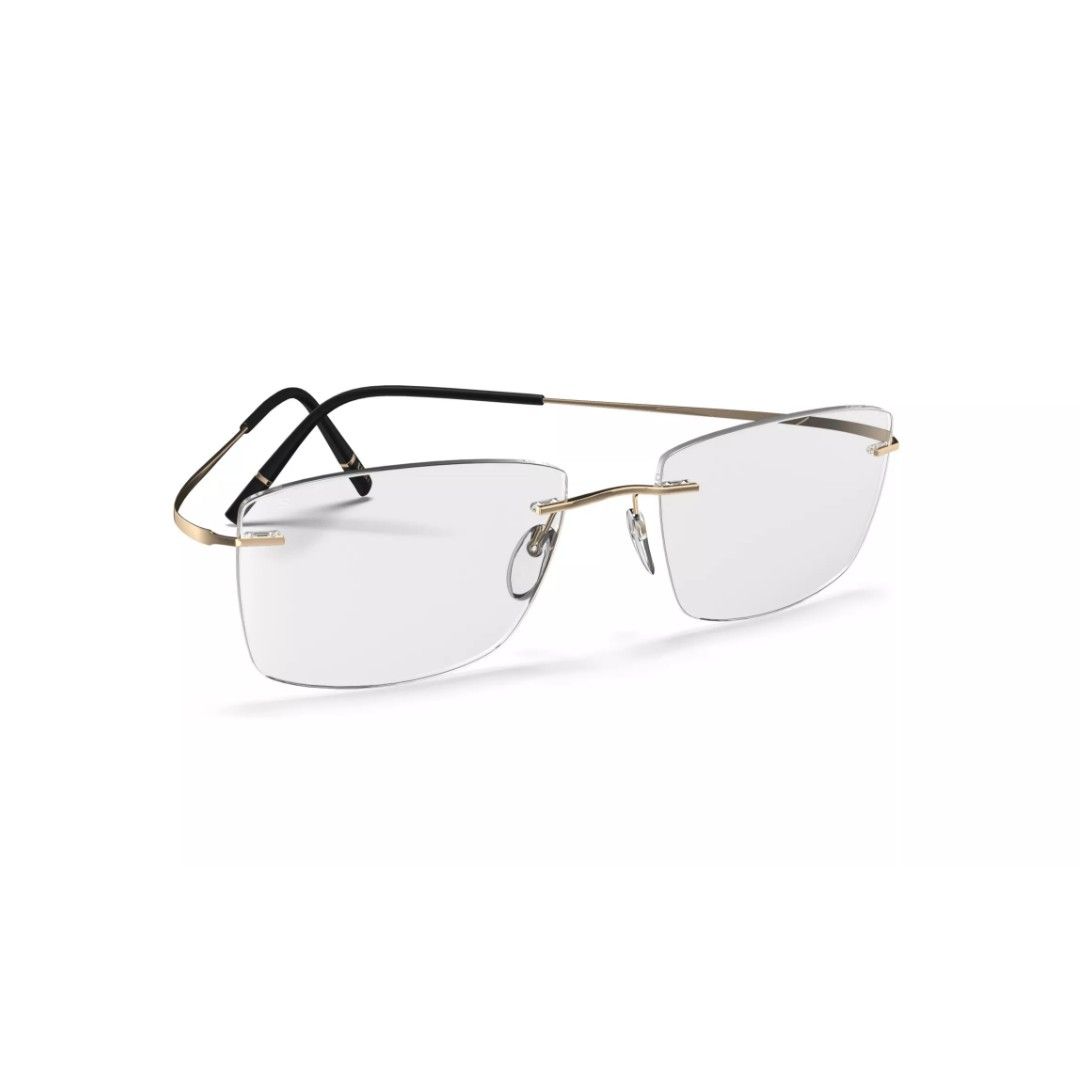
Silhouette Titan Minimal Art
The Silhouette Titan Minimal Art glasses have been going on space missions for a quarter of a century now. Their public version lacks the NASA lenses but the company’s optional sun clips can turn them into sunglasses with complete UV protection.
Sunglasses are far more than a fashion accessory for astronauts. They are safety equipment necessary to keep their eyes safe from harmful radiation and deliver a more comfortable and strain-free viewing experience in space.
Source link


